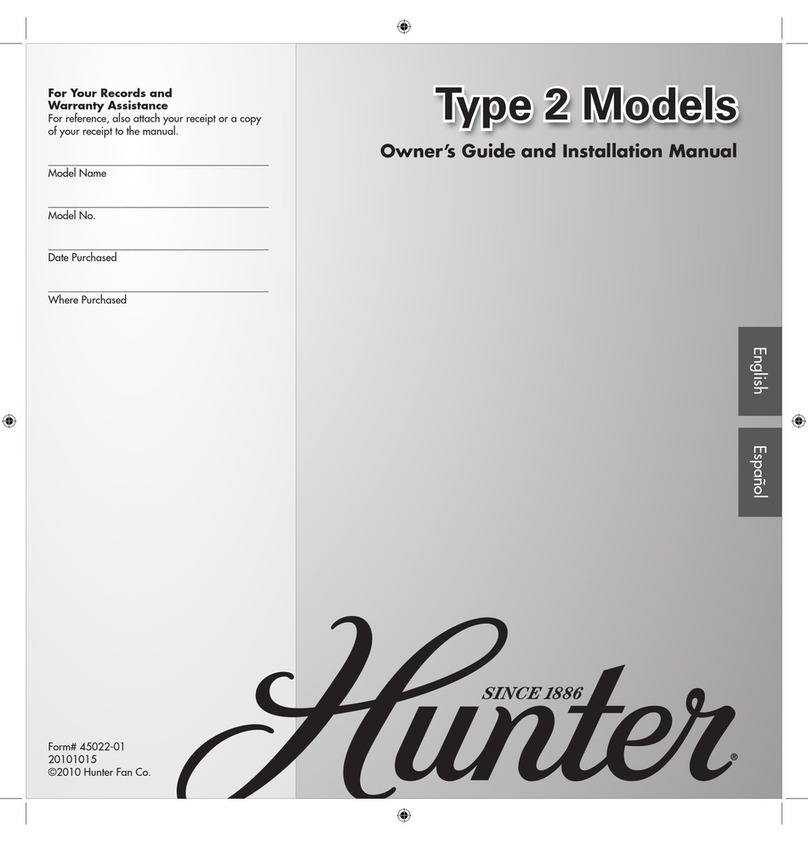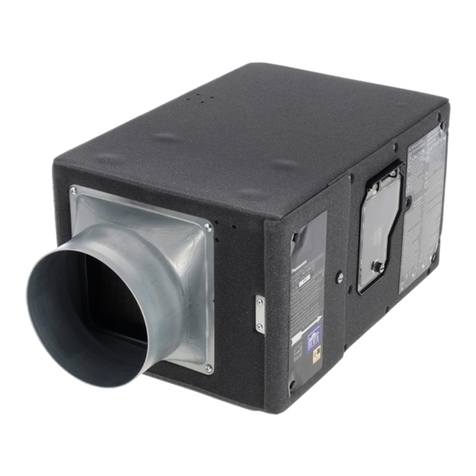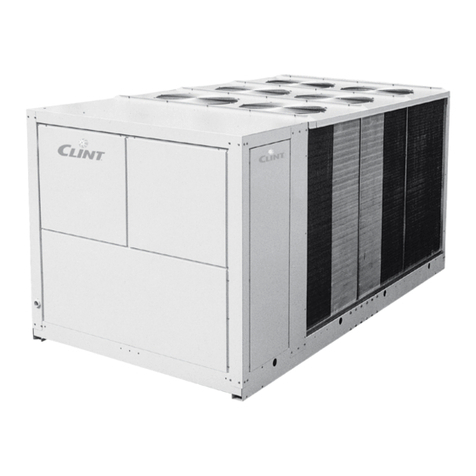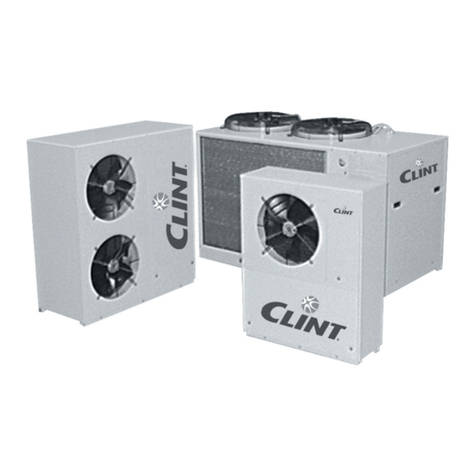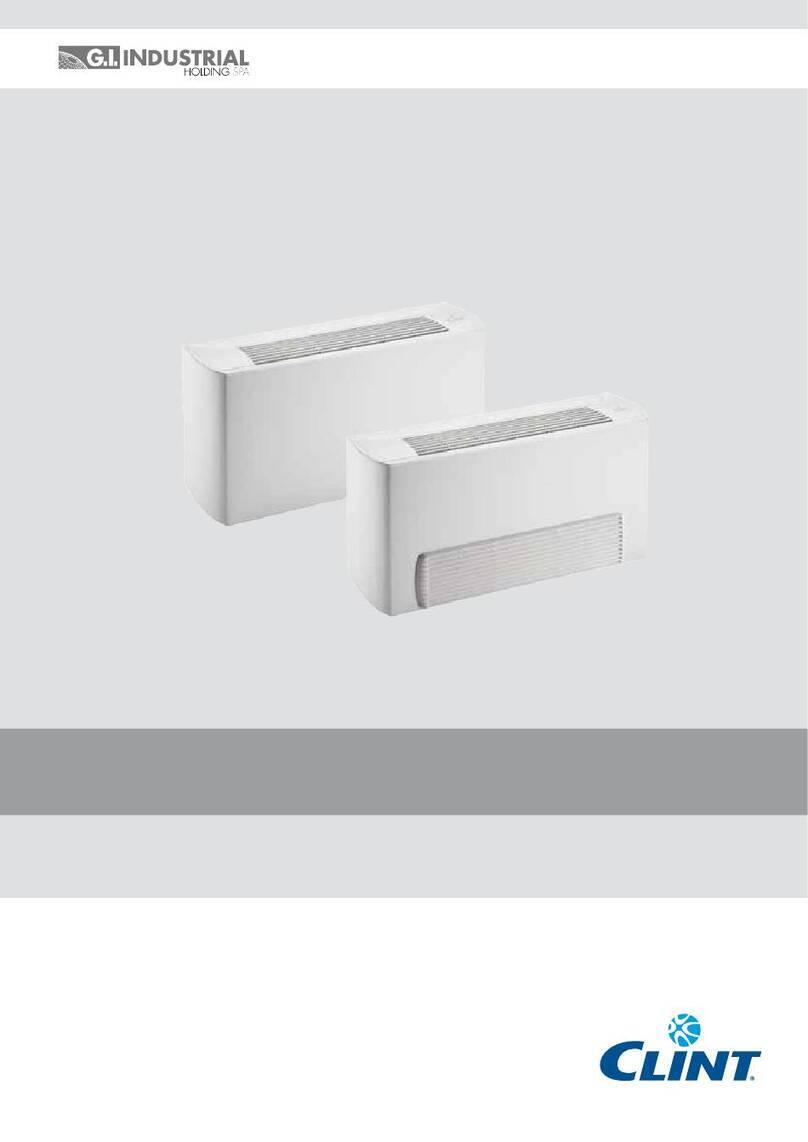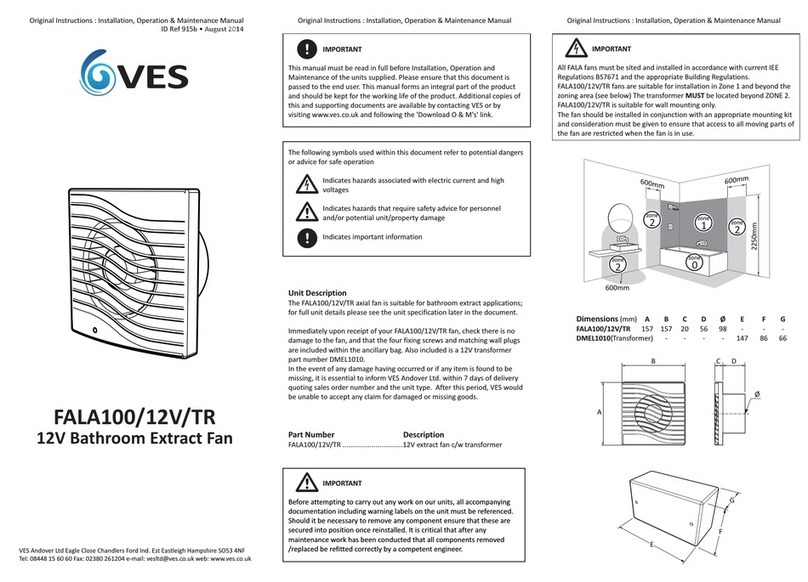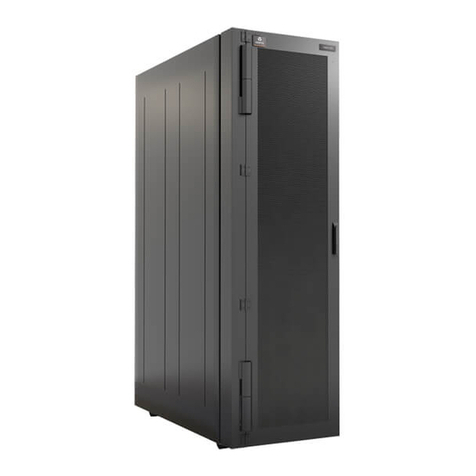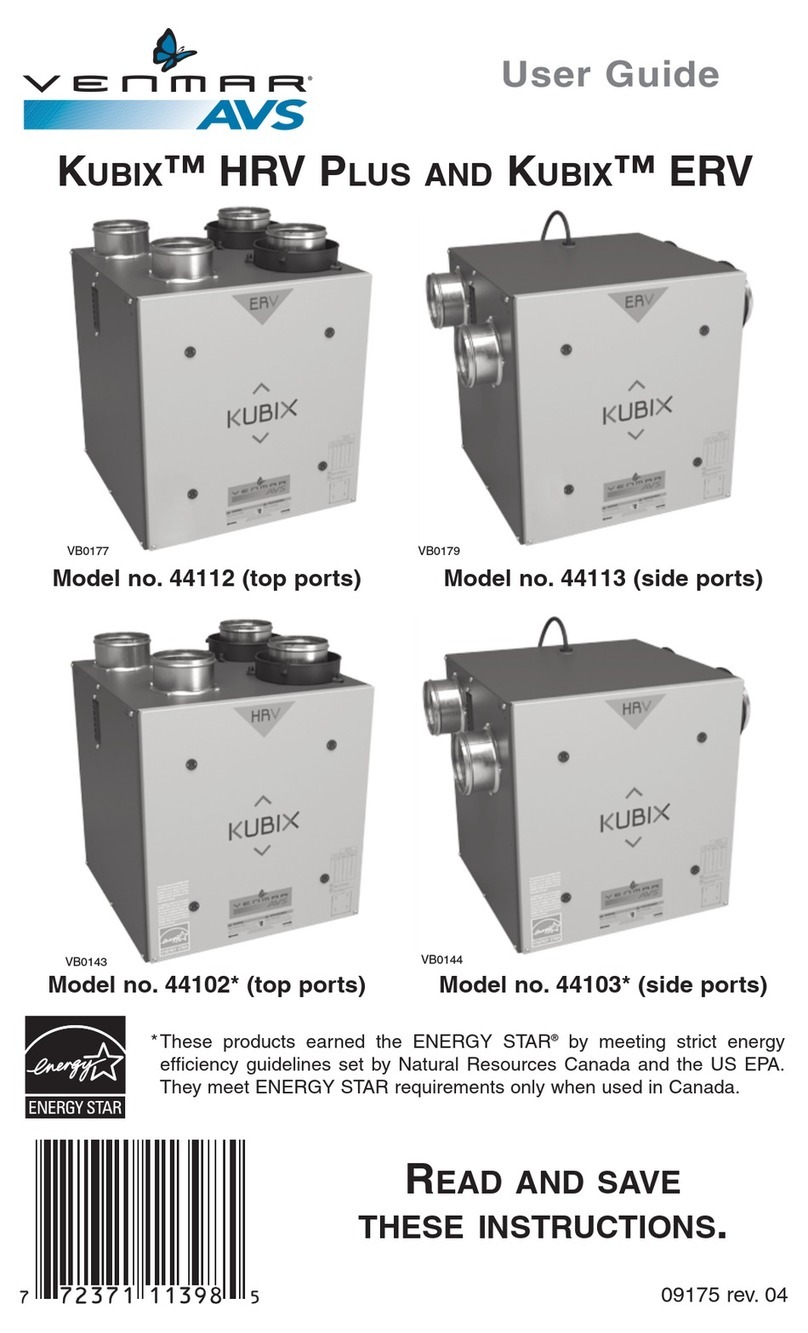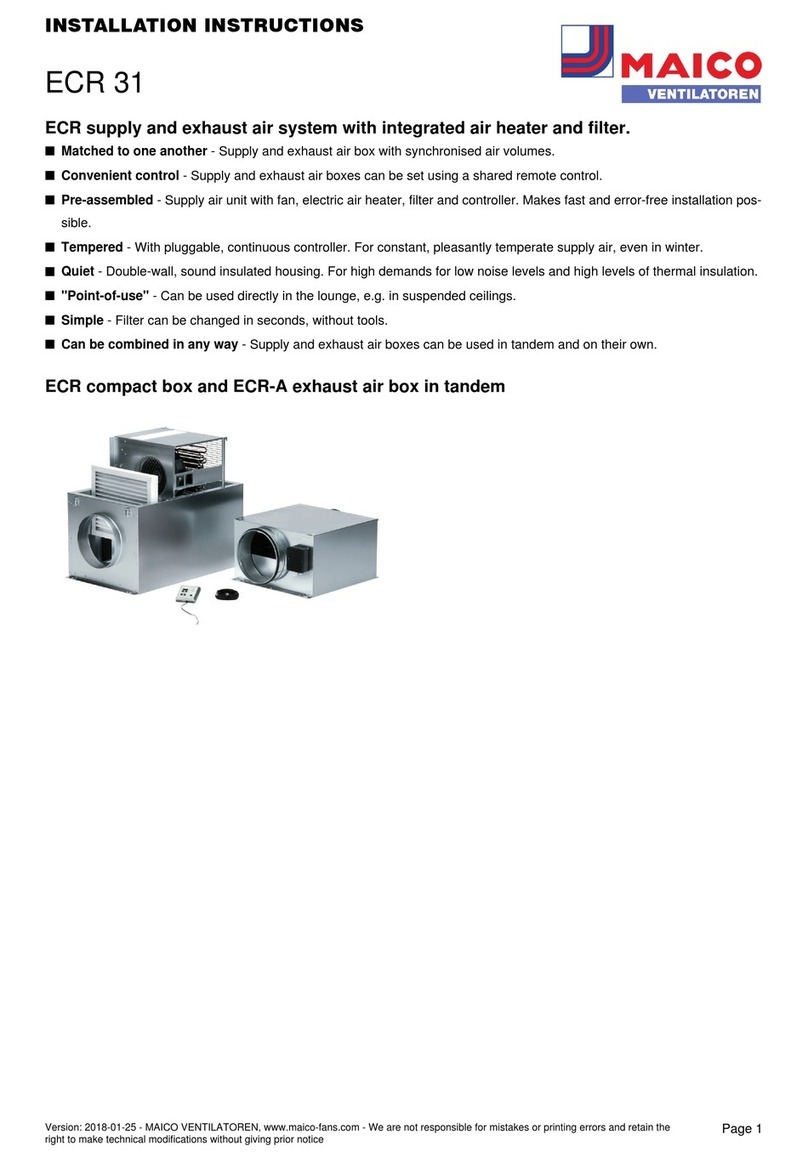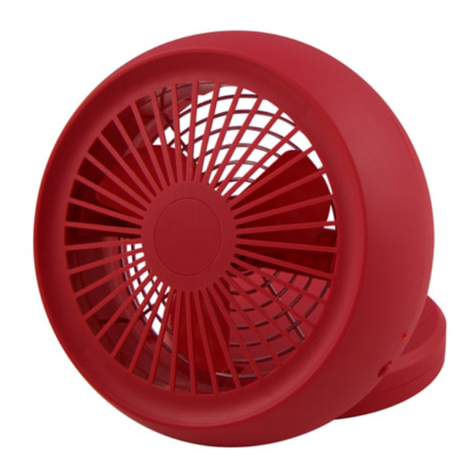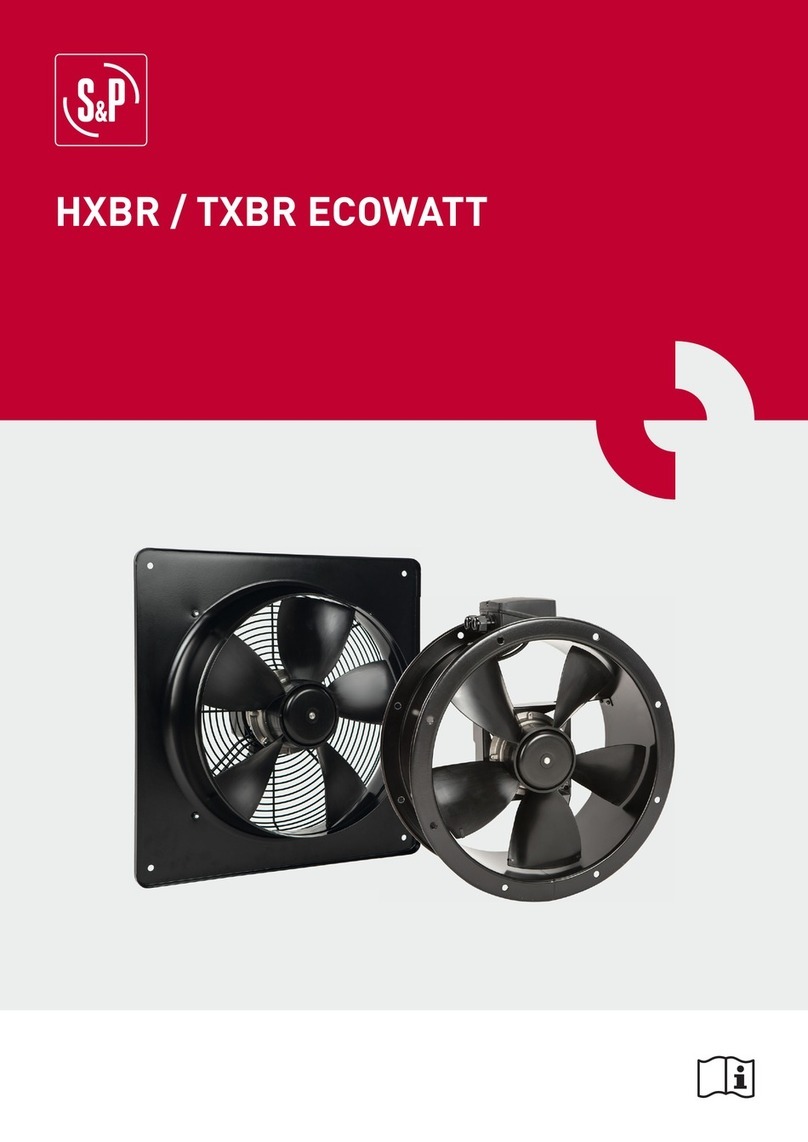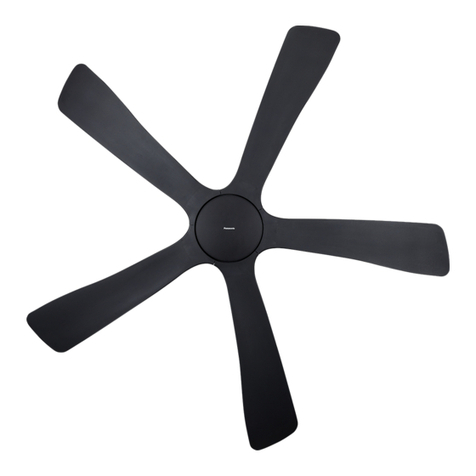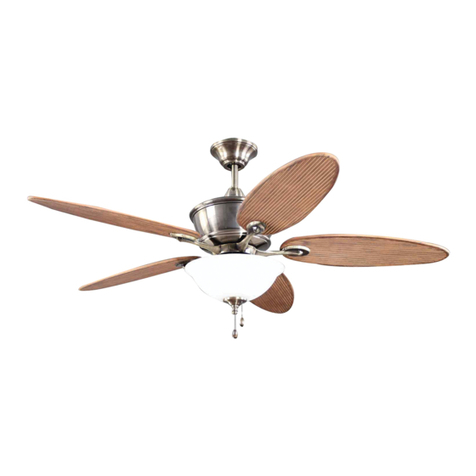
1.3 Components
Fan.
Centrifugal type with double intake, statically and dynamically balanced
to reduce vibration and noise to a minimum, directly coupled with single-
phase 3-speed electric motor (63÷274) or with belt and pulley transmis-
sion, connected to single-speed 3-phase electric motor (333÷544).
Air lter.
Made of recyclable synthetic material class EU3; inspection is foreseen
from the lower (63÷274) or side part (333÷544).
Structure.
In galvanized metal sheet (63÷274) and prepainted metal sheet
(333÷544), entirely covered in heat/sound insulation material.
Condensation discharge
This makes it possible to discharge the condensation even in special
conditions, due to the particular capacity of the tray and substantial
diameter of the discharge pipe.
Heat exchanger
In copper tubes and aluminium ns, complete with air vent and drain pan
with moisture drain pan (63÷274).
Air bleed valves
These are found on the water connections of the coil and make it possi-
ble to bleed air from the coil.
Electrical panel.
Comprising a terminal board for wiring into room control panel and to
power supply.
1.3 Componenti
Ventilatore.
Di tipo centrifugo a doppia aspirazione, bilanciato staticamente e dina-
micamente per ridurre al minimo le vibrazioni e il rumore, direttamente
accoppiato a motore elettrico monofase a tre velocità (63÷274) o con
trasmissione a cinghie e pulegge, collegato a motori elettrici trifase
monovelocità (333÷544).
Filtro aria.
Costituito da materiale sintetico rigenerabile in classe EU3; l’ispezione
è prevista dalla parte inferiore (63÷274) o laterale (333÷544).
Struttura.
Realizzata in lamiera zincata (63÷274) o lamiera preverniciata
(333÷544), rivestita interamente da materiale termoacustico.
Scarico condensa
Permette lo scarico della condensa anche in condizioni particolari data
la particolare capienza della vaschetta e il notevole diametro del tubo
di scarico.
Batteria di scambio termico.
Costituita da una batteria alettata in tubi di rame ed alette corrugate in
alluminio completa di vaschetta raccogli condensa (63÷274).
Valvole sfiato aria
Si trovano sugli attacchi idraulici della batteria e permettono lo sfiato
dell’aria dalla batteria stessa.
Quadro elettrico.
Costituito da una morsettiera per il collegamento al pannello di control-
lo e all’alimentazione.
Installazione, collegamenti elettrici e avviamento / Installation, electrical connections and start-up
2.1 Installazione
L’unità deve essere installata perfettamente orizzontale e in posizione
che consenta di effettuare facilmente la manutenzione ordinaria (puli-
zia filtri) nonchè quella straordinaria.
Per installare l’unità procedere nel seguente modo:
• Fissare il gruppo ventilante al soffitto tramite viti a tassello o barra filet-
tata (mod. 63÷274) oppure tramite staffe di supporto (mod.333÷544).
• Si consiglia di collegare l’entrata dell’acqua al raccordo inferiore.
Collegare i tubi per l’alimentazione della batteria ed effettuare il colle-
gamento dello scarico condensa.
• I tubi di alimentazione idraulica devono essere isolati adeguatamente
per evitare fastidiosi gocciolamenti in funzionamento di raffreddamento.
• Lo scarico della condensa deve essere adeguatamente dimen-
sionato e le tubazioni devono mantenere per tutta la loro lunghezza
una pendenza che consenta un corretto deflusso della condensa.
• Se lo scarico condensa dovesse confluire nella rete fognaria è
necessario realizzare un sifone che impedisca la risalita verso l’am-
biente di cattivi odori (Fig. A).
Attenzione!
Durante il collegamento dei tubi tenere con una chiave l’esagono
di raccordo della batteria in modo da non provocare danni alla
stessa (Fig. B).
2.1 Installation of the fan coil unit
The units must be installed in a perfectly horizontal position and in a
position that allows easy access for both routine maintenance (filter
cleaning) as well as special maintenance.
To install the unit proceed in the following manner:
• Fasten the fan group to the (only models 63÷274) ceiling with the
expansion screws or threaded bar, or with braskets (only models
333÷544).
• It is advisable to connect the water inlet to the lower coupling.
Connect the pipes for the supply of the coil and connect the conden-
sation discharge.
• The water supply pipes must be adequately insulated to avoid bother-
some dripping during cooling operation.
• The discharge of the condensation must be properly sized, and the
pipes must include over their entire length an inclination that allows for
proper drainage of condensation.
•
If the condensation drain flows into the sewer system, it is necessary to
realize a trap that prevents bad odors form entering the room (Fig. A)
.
Attention!
During connection of the pipes, always hold the coil coupling with
a wrench to avoid damaging it (Fig. B).
2
3
4
5
1
3
4
1
2
5
Modello Model 6393 104 133 153 233 274 333 414 464 544
A Larghezza A Width mm 645 1005 1005 1105 1345 1345 1345 1400 1400 1400 1400
B Lunghezza B Lenght mm 455 455 455 505 540 540 540 800 800 800 800
C Altezza C Height mm 295 295 295 325 325 375 375 800 800 1050 1050
X X mm 120 115 115 130 165 165 165 - - - -
YYmm 190 223 223 223 223 223 223 - - - -
Mod. 333 - 414 - 464 - 544
Mod. 63 - 93 - 104 - 133
153 - 233 - 274
Fig. A
Fig. B
Mod. 63÷274
Mod. 333÷544
6
7
6
7

